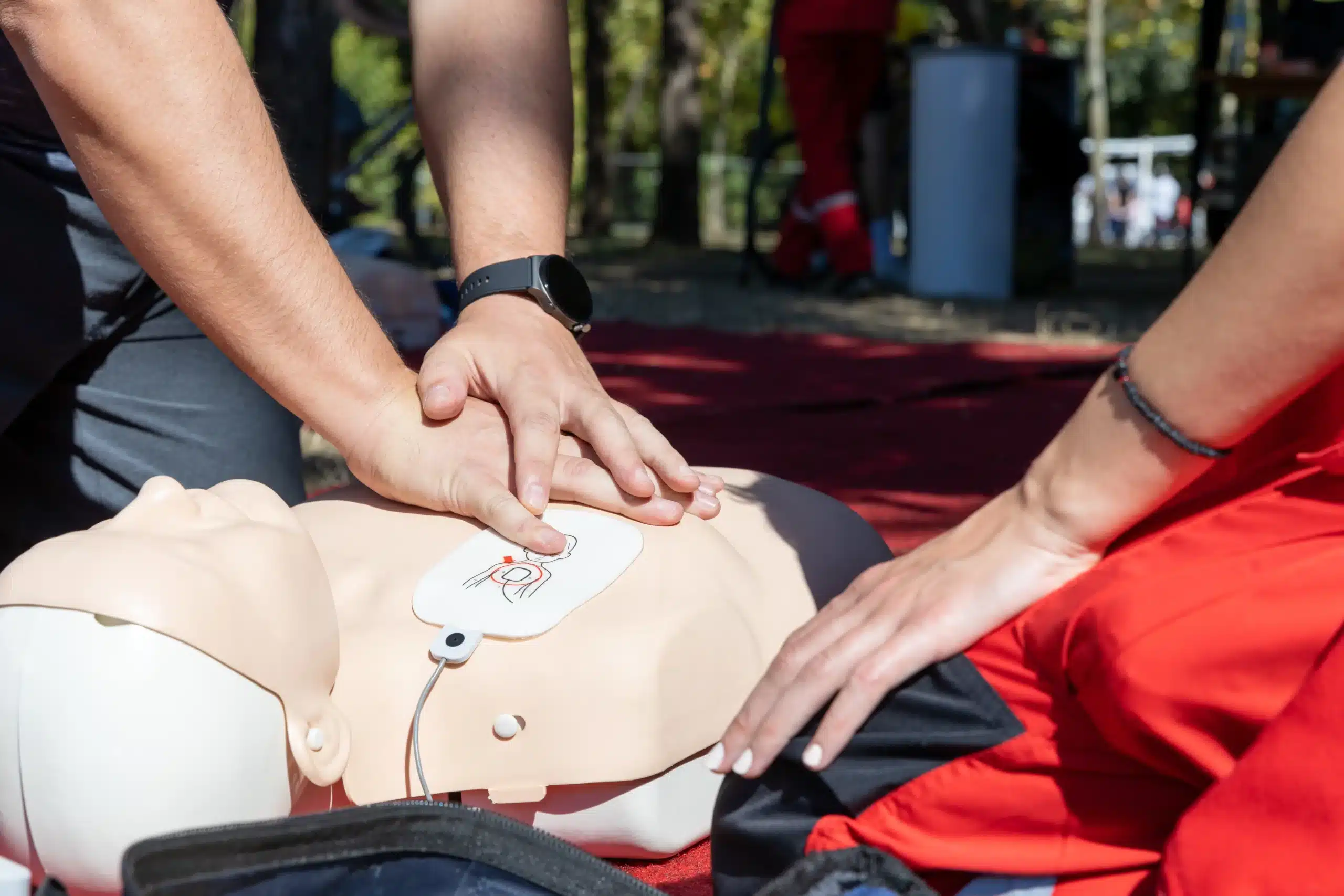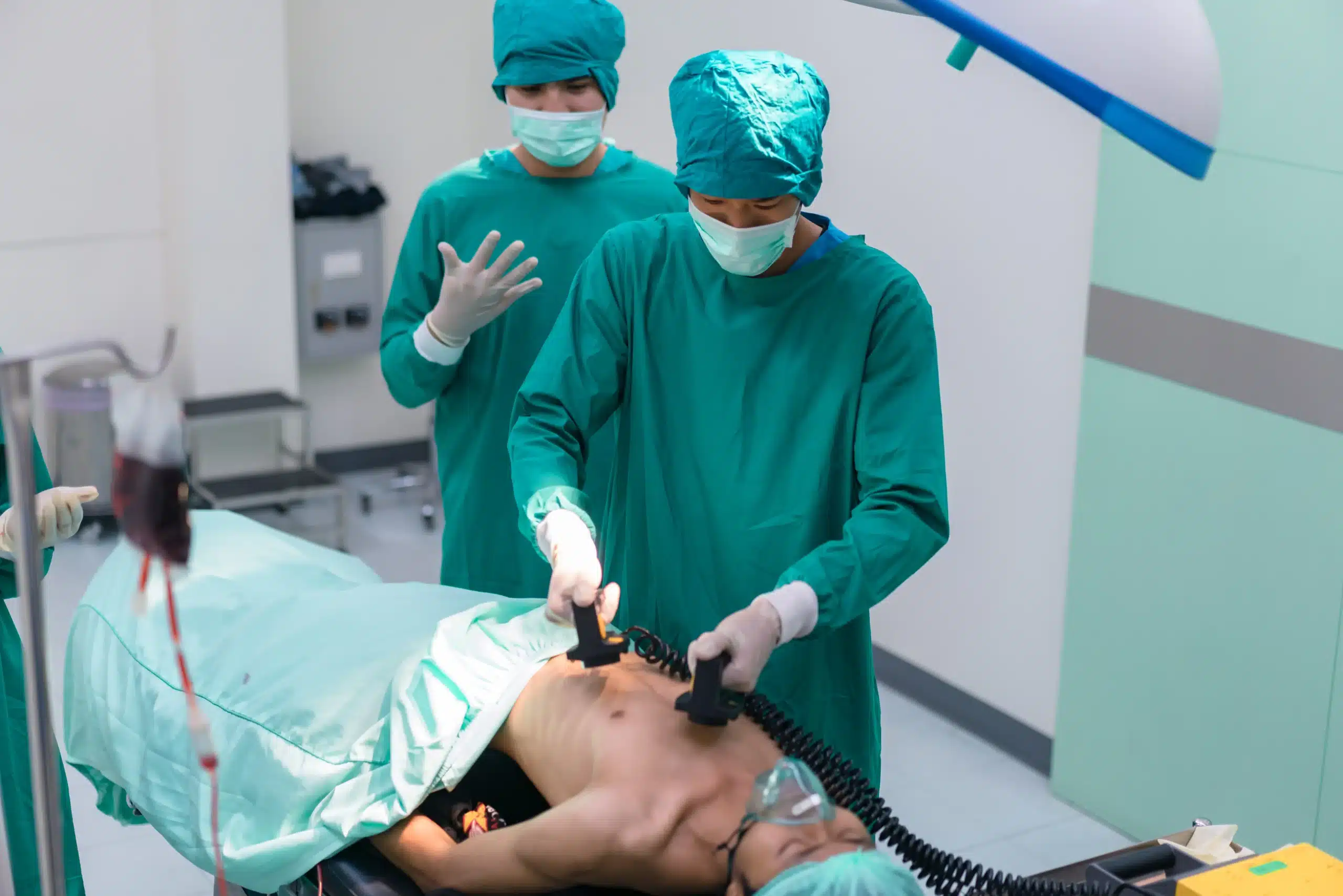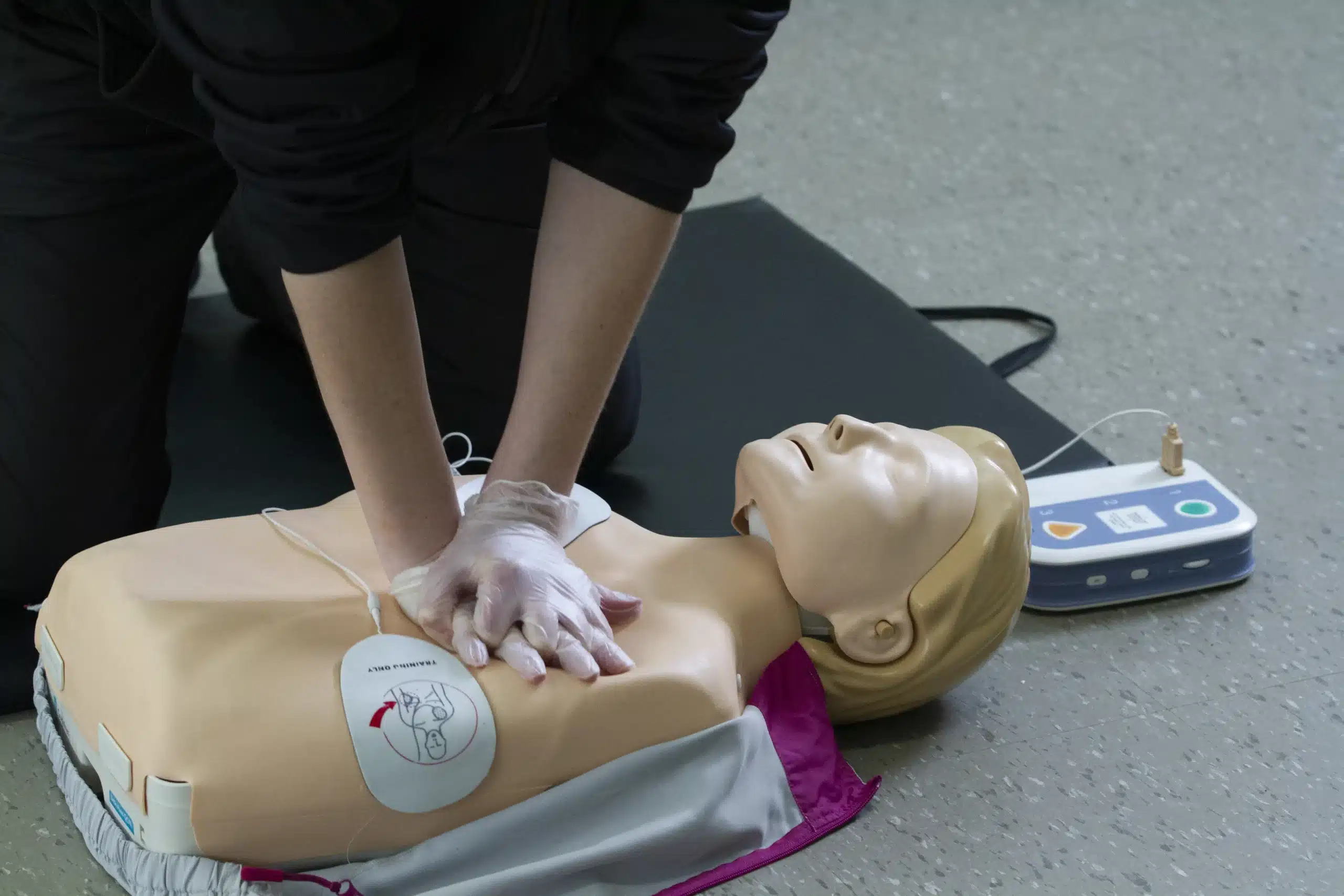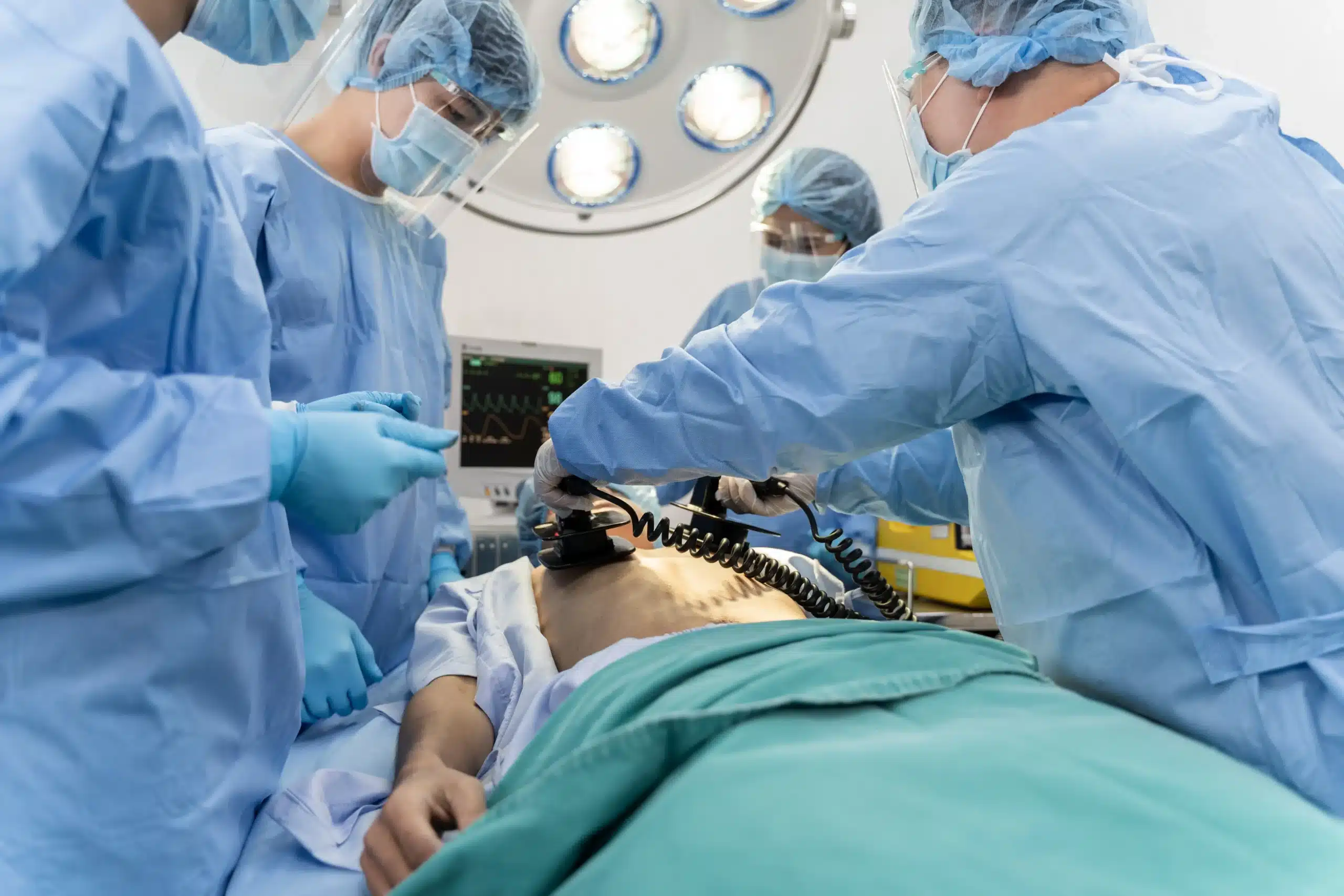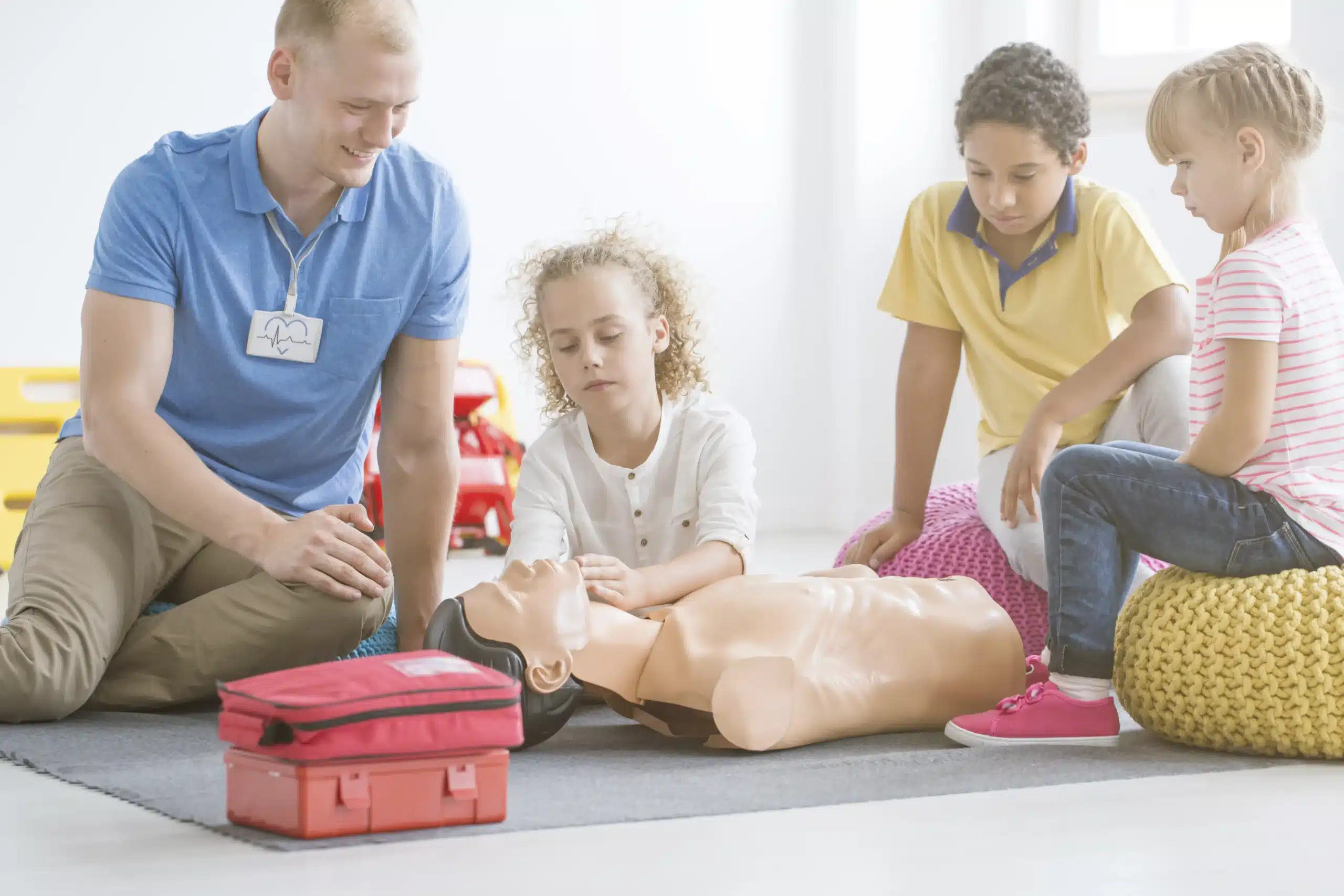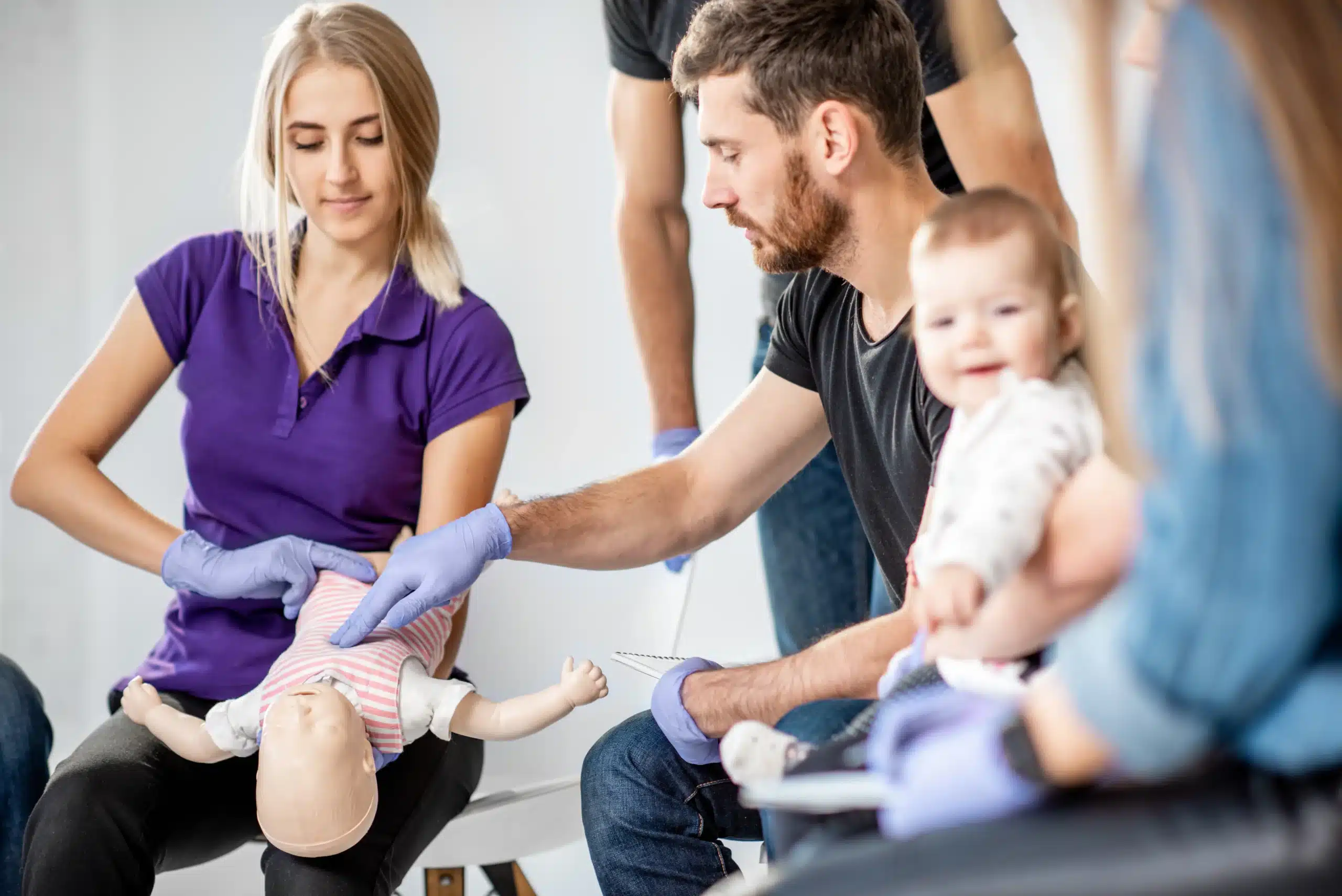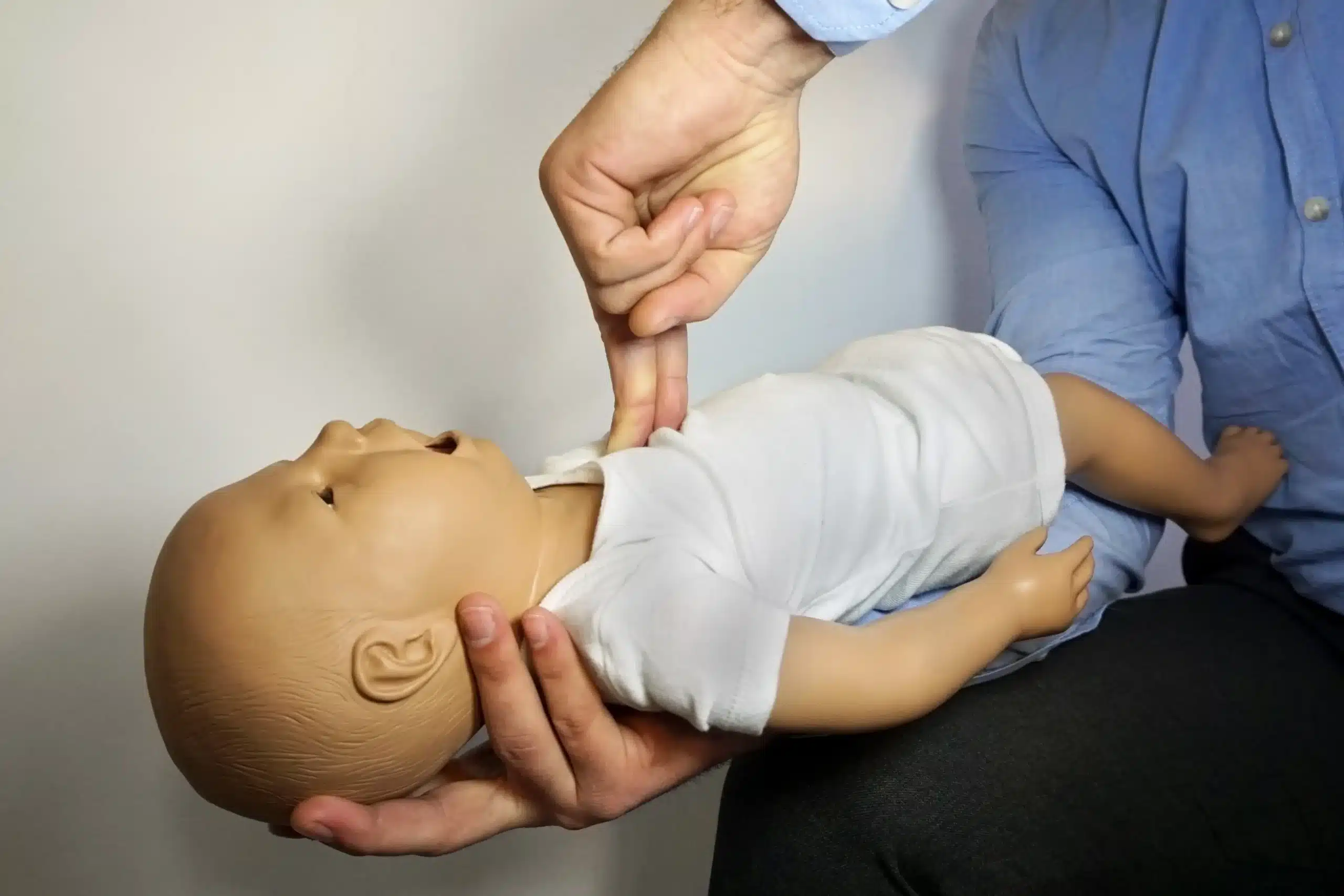Have you ever been in a situation where someone needed immediate medical assistance? It can be terrifying to feel helpless. Equipping yourself with life-saving skills like CPR can make all the difference in such critical moments. This comprehensive guide covers everything you need to know about CPR certification, from finding a “CPR certification near me” to understanding the different types of courses available and what to expect during training. Whether you’re a healthcare professional, work with children, or simply want to be prepared for emergencies, this guide will help you find the right CPR training for your needs. We’ll also discuss the importance of local CPR training and how it contributes to community safety. Let’s empower you to become a confident first responder.
Key Takeaways
- CPR certification empowers you to save lives: Whether required for your profession or for personal preparedness, CPR training provides the skills and confidence to respond effectively in medical emergencies.
- Select a recognized training provider: Ensure your chosen provider is affiliated with a respected organization like the American Heart Association or Red Cross, and confirm the instructors are qualified and experienced.
- Stay current with your CPR skills: Maintain your certification and refresh your knowledge regularly to ensure you’re always prepared to act quickly and confidently in a crisis.
What is CPR Certification?
CPR certification equips you with the skills and confidence to respond effectively during medical emergencies. It’s a formal process that teaches you the proper techniques for performing cardiopulmonary resuscitation (CPR), a life-saving procedure used when someone’s heart stops beating. While you’re not legally required to have CPR certification to perform CPR in an emergency, a certification course ensures you’re properly trained to administer CPR effectively and can mean the difference between life and death. Many CPR classes also include training on how to use an Automated External Defibrillator (AED) and provide basic first-aid instruction. This comprehensive approach prepares you to handle a range of medical situations. CPR certification courses cover essential knowledge about cardiac arrest and build the practical skills needed to assist victims, ultimately increasing their chances of survival. For those located in or near San Ramon, Dublin, or Danville, California, you can find convenient and affordable options for CPR and first aid certification at San Ramon CPR Courses.
CPR Certification Courses Near You
San Ramon CPR Courses offers a variety of CPR and first-aid classes near you in San Ramon, Dublin, and Danville, California. Whether you’re a healthcare professional, childcare provider, or simply want to be prepared for emergencies, there’s a course that fits your needs. We offer certification courses in several disciplines, including Basic Life Support (BLS), Advanced Cardiac Life Support (ACLS), Pediatric Advanced Life Support (PALS), and Heartsaver CPR/AED. We also offer combined first aid and CPR training.
Basic Life Support (BLS)
BLS certification covers the fundamentals of CPR for adults, children, and infants. It also includes training on using an automated external defibrillator (AED) and relieving choking. BLS certification is a prerequisite for many healthcare professions and is recommended for anyone who wants to learn these essential life-saving skills. It’s also a great starting point if you’re considering more advanced training like ACLS.
Advanced Cardiac Life Support (ACLS)
ACLS certification is designed for healthcare professionals who manage cardiopulmonary arrest and other cardiovascular emergencies. This advanced course builds upon the skills learned in BLS and covers topics such as airway management, pharmacology, and effective team dynamics during resuscitation. Consider adding ACLS to your skillset to be prepared for advanced life support scenarios.
Pediatric Advanced Life Support (PALS)
PALS certification focuses on the specific needs of infants and children in emergency situations. Healthcare providers who work with children, such as pediatricians, nurses, and paramedics, should obtain PALS certification. The course covers topics like pediatric assessment, respiratory emergencies, and cardiac arrest. These skills are critical for anyone working in pediatric care.
Heartsaver CPR/AED
Heartsaver CPR/AED courses are ideal for those who don’t work in healthcare but still want to learn CPR and how to use an AED. This course is suitable for teachers, coaches, parents, and anyone interested in being prepared for an emergency. Learning CPR and AED skills can empower you to help in critical situations.
First Aid & CPR
Combining first aid and CPR training provides a well-rounded approach to emergency preparedness. You’ll learn how to respond to various medical emergencies, from treating minor injuries to performing life-saving CPR. This comprehensive training is valuable for anyone, especially those working with children or in high-risk environments. For convenient and affordable options for combined first aid and CPR certification, explore our offerings at San Ramon CPR courses. Check out our group discounts for even more savings.
Find Reputable CPR Certification Providers
Finding the right CPR certification course is essential for gaining confidence and competence in life-saving skills. It’s important to choose a recognized and accredited provider. Here’s what to look for:
Accredited Organizations
Several respected organizations offer CPR training and certification. Look for providers affiliated with groups like the American Heart Association, Red Cross, National Safety Council, or American Safety & Health Institute. These organizations maintain high standards for their training programs. For example, all courses at San Ramon CPR Courses follow American Heart Association guidelines, ensuring you receive top-tier instruction. We also offer specialized courses like our EMSA Child Care Health & Safety program for childcare providers.
American Heart Association
The American Heart Association (AHA) is a leader in cardiovascular health and offers a range of CPR and first aid courses, including Basic Life Support (BLS). AHA certifications are widely accepted and respected.
Red Cross
The Red Cross also provides various training and certification classes, from CPR and AED to First Aid and BLS. They offer courses for both the general public and healthcare professionals.
National Safety Council
The National Safety Council (NSC) offers CPR and first aid training programs recognized across many industries. Their courses equip participants with the skills to respond effectively in emergencies.
American Safety & Health Institute
The American Safety & Health Institute (ASHI) provides CPR and first aid training that meets OSHA requirements. They offer programs for both healthcare providers and the general public.
Check Reviews and Testimonials
Before committing to a course, take a moment to read reviews and testimonials from previous students. Checking out feedback from others can give you valuable insights into the quality of instruction, course materials, and overall learning experience. For instance, you can find reviews for San Ramon CPR Courses on our website.
Verify Instructor Qualifications
Confirm that the instructors leading the course are certified and experienced. Instructors should have current certifications and a strong background in CPR training. Ask about their qualifications and experience to ensure you’re learning from knowledgeable professionals. San Ramon CPR Courses prioritizes experienced instructors dedicated to providing high-quality training. We also offer RQI classes for healthcare professionals seeking to maintain their resuscitation skills.
Cost of Local CPR Certification
CPR certification costs vary depending on the training level you need and your chosen provider. Understanding pricing factors helps you budget and find the best value for this life-saving skill.
Average Prices
CPR and first-aid certification courses in San Ramon, Danville, and Dublin range from around $50 for basic CPR and first aid to upwards of $150 for advanced certifications like ACLS and PALS. Prices depend on the course format, length, and included materials. Check with specific providers like San Ramon CPR Courses for up-to-date pricing.
Group Discounts and Special Offers
Many CPR training providers offer group discounts, making it cost-effective for workplaces, community groups, or families. Group discounts can significantly lower the per-person cost. Some providers also offer promotions or package deals that combine certifications or include additional resources like online study materials. Look for these offers to maximize your training budget. Specialized courses, such as the EMSA Child Care Health & Safety training, may have unique pricing.
Low Price Guarantees
Some providers offer a low-price guarantee, ensuring you get the most competitive rate. San Ramon CPR Courses is known for its affordability, so comparing their prices with other local providers is wise. A low-price guarantee gives you peace of mind, knowing you’re investing wisely without compromising quality. Ask providers about price-matching policies or other ways to save. Some offer discounts for students or those renewing their certifications. Explore options like RQI classes for cost-effective renewal.
What to Expect in Your CPR Course
Knowing what to expect can help you feel prepared and confident on the day of your CPR class. Here’s a general overview of a typical CPR course, though specifics may vary depending on the provider and the level of certification you’re pursuing. San Ramon CPR Courses prioritizes a blend of theory and practical application to ensure you gain the skills and knowledge needed to respond effectively in an emergency.
Course Duration and Format
CPR courses are designed to be comprehensive without being overwhelming. Most CPR certification courses can be completed in a single day, often lasting between four and six hours. We offer courses in a variety of formats, including in-person classes at our convenient Bishop Ranch 1 location, giving you the flexibility to choose the learning environment that suits you best.
Theory
The theory portion of the course covers the fundamentals of CPR. You’ll learn why CPR is important and how it works to maintain blood circulation and oxygen flow during cardiac arrest. You’ll also learn to recognize the signs of a heart attack, stroke, and other medical emergencies. This portion often covers the use of automated external defibrillators (AEDs). At San Ramon CPR Courses, we keep our class sizes small to allow for plenty of interaction and questions.
Hands-On Practice
CPR is a hands-on skill, and our courses emphasize practical training. You’ll practice chest compressions, rescue breaths, and AED use on manikins in a safe and supportive environment. Our instructors provide personalized feedback to help you develop the correct technique and build your confidence. This hands-on practice is essential for developing muscle memory and ensuring you can perform CPR effectively under pressure.
Assessment and Certification
To receive your CPR certification, you’ll participate in a skills test to demonstrate your proficiency in the techniques learned. This typically involves performing CPR and using an AED on a manikin while being observed by an instructor. Upon successful completion, you’ll receive your official American Heart Association certification card, valid for two years. At San Ramon CPR Courses, we issue certification cards immediately upon completion, so you leave our facility fully certified and ready to respond to emergencies.
Online vs. In-Person CPR Training
Choosing the right CPR training format is a big decision. Both online and in-person learning have advantages, so let’s break down what you should consider.
Pros and Cons
Online CPR training offers flexibility, letting you learn at your own pace and on your own schedule. However, online certifications may not meet all requirements, especially for healthcare professionals. Many states require in-person training, regardless of any online options. Even if your employer doesn’t mandate in-person training, double-check their certification policies before signing up for an online course. It would be a waste to invest time and money in a certification your employer won’t accept.
Hands-on practice is where in-person training excels. While online courses cover the basics, practicing on a manikin with a qualified instructor builds confidence and helps you master proper technique. This is something online videos can’t replicate. In a real emergency, that hands-on experience can make all the difference.
Blended Learning
Blended learning programs offer a practical compromise, combining online coursework with in-person skills sessions. You get the convenience of online learning plus essential hands-on practice. If this interests you, make sure the program meets your state’s requirements. Organizations like the Red Cross offer blended learning CPR courses that combine online modules with in-person skills sessions led by certified instructors. This lets you learn at your own speed and then demonstrate your skills to an expert. Always check with your licensing board to ensure the program aligns with their guidelines.
CPR Certification for Your Profession
CPR certification isn’t just for healthcare professionals. It’s a valuable skill for anyone, but certain professions benefit significantly from having certified team members. Knowing CPR can empower you to handle emergencies effectively and potentially save lives.
Healthcare Providers
As a healthcare provider, holding a current CPR certification is often a job requirement. It’s the foundation for more advanced life support training like ACLS and PALS. BLS training for healthcare providers covers core skills for responding to cardiac arrest and other emergencies in a clinical setting. This specialized training ensures you can provide high-quality care in critical situations. Check out our RQI classes for convenient recertification options.
Childcare Workers and Educators
For those working with children, CPR certification provides essential skills to respond to emergencies. From choking incidents to sudden cardiac arrest, CPR training equips childcare workers and educators with the knowledge and confidence to act quickly. Many employers prefer or require CPR and First Aid certification as a condition of employment, ensuring the safety and well-being of the children in their care. EMSA Child Care Health & Safety training is also a valuable resource for childcare providers.
Fitness and Sports Professionals
Fitness and sports professionals often work in environments where physical exertion is high, increasing the risk of medical emergencies. CPR certification is a crucial asset in these settings. It allows trainers, coaches, and other professionals to respond effectively to sudden cardiac events, injuries, or other health crises that may arise during training sessions or sporting events. Our low price guarantee makes getting certified accessible for everyone.
General Public and Family Caregivers
Even without a professional requirement, CPR training is a valuable life skill. Knowing CPR can empower you to assist family members, friends, or even strangers in a medical emergency. CPR and First Aid certification provides the skills and confidence to respond effectively until professional help arrives, potentially making a life-saving difference. Consider taking a class with family members or friends and take advantage of our group discounts.
Maintain Your CPR Certification
CPR skills are like any other—they fade if you don’t use them. Staying current with your CPR certification isn’t just about checking a box; it’s about ensuring you’re prepared to act confidently and effectively in a real emergency. Here’s what you need to know about maintaining your certification.
Renewal Requirements
CPR certifications are typically valid for two years. To maintain your qualifications and stay up-to-date on the latest CPR guidelines and procedures from the American Heart Association, you’ll need to renew your certification before it expires. Keep track of your certification expiration date and plan to recertify in advance. This ensures you’re always ready to respond to a medical emergency. Check with your certifying organization, such as the American Red Cross or American Heart Association, for specific renewal requirements. San Ramon CPR Courses offers convenient renewal courses to help you stay current.
Recertification Process
Recertification usually involves completing a renewal course. These courses cover the same core material as the initial certification course but often incorporate updated guidelines and techniques. Successfully completing the recertification course extends your certification for another two years. It also validates that you’ve refreshed your knowledge and skills, giving you the confidence to provide effective CPR in a critical situation. San Ramon CPR Courses offers a variety of recertification courses to fit your schedule and needs.
Continuing Education
Even if your certification is current, ongoing CPR education is invaluable. Regularly reviewing CPR techniques and staying informed about any changes in protocols can significantly improve your preparedness and effectiveness during an emergency. Consider taking refresher courses or workshops, or practicing with friends or family members to keep your skills sharp. Many CPR courses also incorporate First Aid training, giving you a broader range of skills to handle various medical situations. This comprehensive approach can be especially beneficial for childcare providers, healthcare professionals, and anyone responsible for the safety of others.
Prepare for Your CPR Course
Getting ready for your CPR class doesn’t take much, but a little prep work can make your learning experience even better. Here’s what you should know before you go:
What to Bring
One of the great things about taking a CPR course with San Ramon CPR Courses is that we provide all the necessary equipment. You’ll receive a free keychain CPR training mask on the day of the course, so you can practice your skills safely and effectively. Just bring yourself, a willingness to learn, and get ready to gain some lifesaving skills!
Pre-Course Study Materials
While pre-course study isn’t required for our CPR classes, familiarizing yourself with the basics can be helpful. Many CPR classes, including ours, combine CPR and AED training with basic life-saving and first-aid training, so you’ll cover a lot of ground. Even a quick overview of CPR techniques can give you a head start. Remember, while online resources can be a great starting point, many employers and organizations prefer or require certification from in-person training like the kind we offer at San Ramon CPR Courses.
Get Ready
Learning CPR is empowering. CPR certification provides you with the knowledge and confidence to respond effectively in medical emergencies. You’ll learn how to recognize the signs of a cardiac arrest, perform chest compressions, and provide rescue breaths—skills that could make the difference between life and death. Ready to become a part of the solution? Sign up for a CPR training course today!
Why Local CPR Training Matters
CPR training is an invaluable skill, but learning it locally makes it even more impactful. It strengthens your community and prepares you to handle emergencies effectively. Here’s why local CPR training matters:
Community Safety
When you train in CPR locally, you become a vital link in the chain of survival within your community. You’re more likely to use your skills to help friends, family, neighbors, or even strangers in your area. Think of it as building a network of lifesavers, ready to respond when it matters most. CPR certification equips you with the knowledge and confidence to respond effectively during medical emergencies, potentially making the difference between life and death. Having more trained individuals in a community significantly increases the chances of someone nearby knowing how to administer CPR in a critical situation, as highlighted by Alameda CPR Classes.
Immediate Response
In medical emergencies like cardiac arrest, every second counts. The faster CPR is initiated, the greater the chances of survival. Local training means you’re more likely to be present when an emergency occurs in your community. As USCPR Online points out, more cardiac arrest victims would survive if more people knew CPR. Local CPR classes make training accessible and convenient, ensuring more people in the community are prepared to respond immediately. Check out the convenient and affordable options at San Ramon CPR Courses.
Confidence in Emergencies
Knowing you have the skills to handle a medical crisis brings a sense of empowerment. Local CPR training provides the confidence and ability to assist loved ones, strangers, or colleagues during life-threatening situations, significantly increasing the chances of a positive outcome. This confidence extends beyond the technical skills; it also prepares you to stay calm and collected under pressure, enabling you to think clearly and act decisively when it matters most. This is especially valuable in high-stress situations where quick thinking and decisive action can be lifesaving, a benefit emphasized by Alameda CPR Classes.
Related Articles
- CPR Training in Dublin: Your Guide – San Ramon CPR Classes
- San Ramon CPR Certification: Your Guide – San Ramon CPR Classes
- CPR & First-Aid Training in Danville: Your Complete Guide – San Ramon CPR Classes
- American Heart Association Course – San Ramon CPR Classes
- Online CPR Classes Dublin: Your Complete Guide – San Ramon CPR Classes
Frequently Asked Questions
How long does CPR certification last, and how do I renew it? CPR certification is typically valid for two years. Renewal involves taking a recertification course that covers core CPR skills and updated guidelines. Plan to renew before your certification expires to maintain your qualifications. Contact your certifying organization or training provider like San Ramon CPR Courses for specific renewal requirements and available courses.
What’s the difference between BLS, ACLS, and PALS certification? BLS (Basic Life Support) teaches fundamental CPR skills for adults, children, and infants, along with AED use and choking relief. ACLS (Advanced Cardiac Life Support) is designed for healthcare professionals managing cardiac arrest and other cardiovascular emergencies, building upon BLS skills with advanced techniques. PALS (Pediatric Advanced Life Support) focuses on the specific needs of infants and children during emergencies, covering pediatric assessment, respiratory emergencies, and cardiac arrest.
Is online CPR training sufficient, or should I take an in-person class? While online CPR training offers flexibility, it may not meet all requirements, especially for healthcare professionals or specific licensing boards. Many organizations prefer or require in-person training due to the crucial hands-on practice it provides. In-person classes allow for personalized feedback from instructors, ensuring you develop proper technique and build confidence in your skills. Consider blended learning programs that combine online coursework with in-person skills sessions for a balanced approach.
What if I’m not a healthcare professional? Is CPR training still beneficial for me? Absolutely! CPR training is a valuable life skill for anyone, regardless of profession. Knowing CPR empowers you to assist family, friends, or even strangers during medical emergencies. It provides the confidence and skills to respond effectively until professional help arrives, potentially making a life-saving difference.
How much does CPR certification cost, and are there any discounts available? CPR certification costs vary depending on the course type and provider. Basic CPR and first-aid courses typically range from $50 to $150, with advanced certifications like ACLS and PALS potentially costing more. Many providers offer group discounts, making it more affordable for workplaces, community groups, or families. Look for special offers, package deals, or low-price guarantees to maximize your training budget. Contact San Ramon CPR Courses for specific pricing and discount information.
